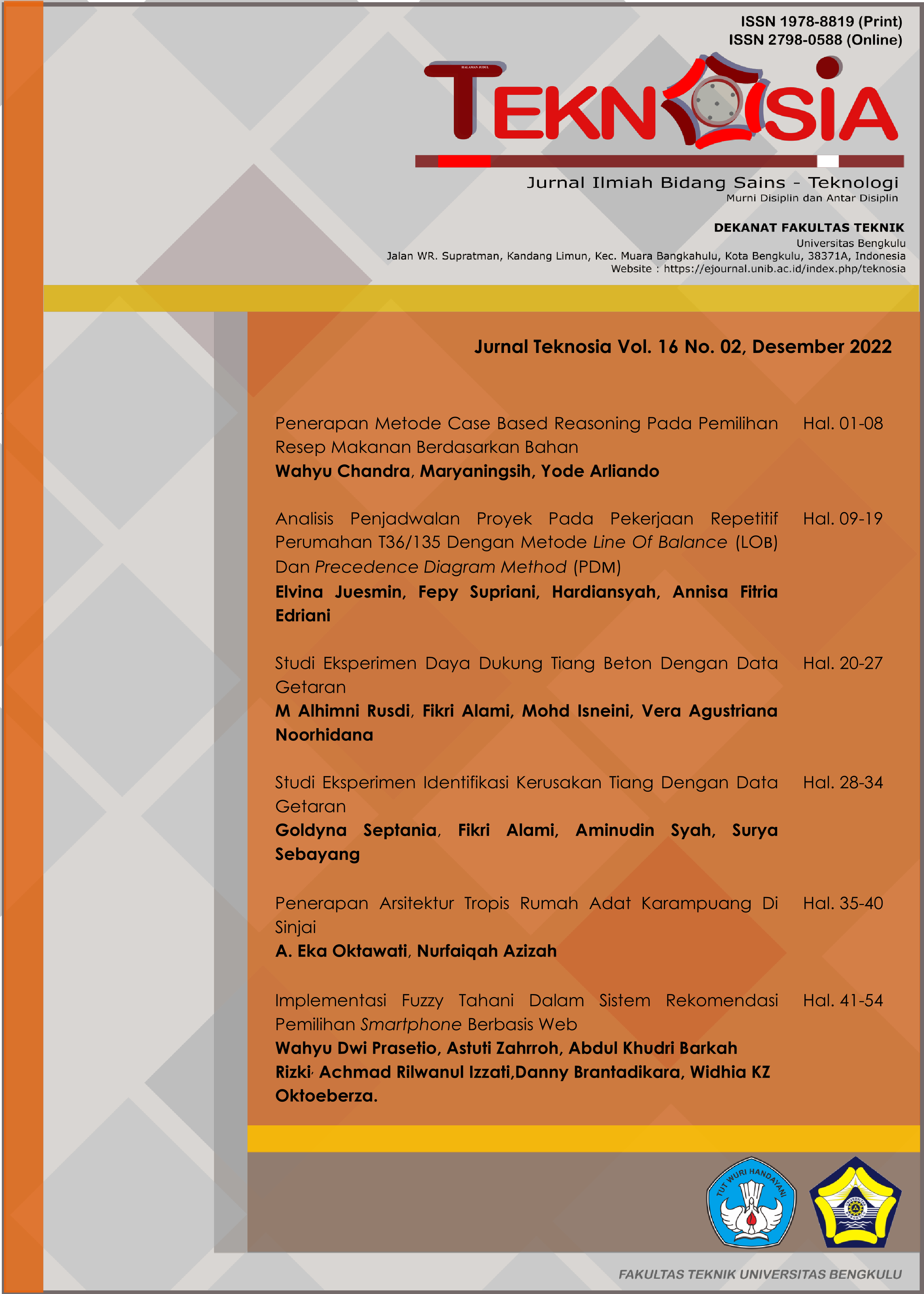Main Article Content
Abstract
In housing projects, many work items are repetitive work. A project schedule that does not take into account repetitive work can lead to delays in project completion time. Proper scheduling methods will need to be applied so that project resources can be used effectively and efficiently. The research aims to analyze project scheduling and know the effectiveness of repetitive job scheduling projects in the building housing project. The study is perfomed by using Line Of Balance (LOB) which is a method of using the operating balance for each on-going performance work. Precedence Diagrams Method (PDM) shows critical tasks that can not be shown by LOB. The subject of this research is the construction of 10 houses sized 35/135 m2 in which 15 workers were employed. The results show that the duration needed to complete the project is 69 days. Compared to the existing duration (78 days) there is a 9 days difference. The effectiveness of scheduling is 11,5%.
Keyword: Line of Balance, Precedence Diagram Method, Repetitive Project, Scheduling.
Article Details
Copyright (c) 2023 Fepy Supriani

This work is licensed under a Creative Commons Attribution-ShareAlike 4.0 International License.
Authors who publish with this journal agree with the following terms:
- Authors retain copyright and grant the journal the right of first publication with the work simultaneously licensed under a Creative Commons Attribution License that allows others to share the work with an acknowledgement of the work's authorship and initial publication in this journal.
- Authors are able to enter into separate, additional contractual arrangements for the non-exclusive distribution of the journal's published version of the work (e.g., post it to an institutional repository or publish it in a book), with an acknowledgement of its initial publication in this journal.
- Authors are permitted and encouraged to post their work online (e.g., in institutional repositories or on their website) prior to and during the submission process, as it can lead to productive exchanges, as well as earlier and greater citation of published work (See The Effect of Open Access).
- This work is licensed under a Creative Commons Attribution-ShareAlike 4.0 International License.
